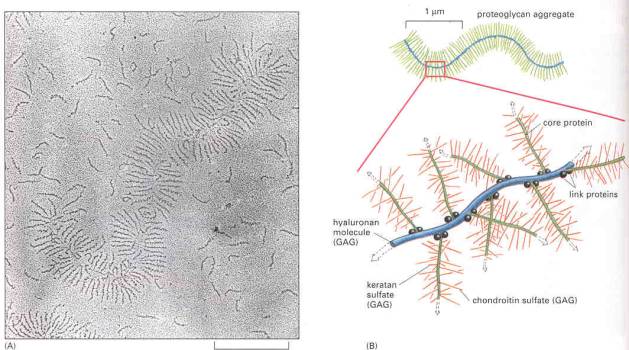Articular Cartilage Composition
Articular cartilage is a unique structure that provides a low friction surface for gliding joints, as well as shock absorption and load transduction to the underlying subchondral bone. Articular cartilage achieves coefficients of friction that are one-tenth to one-one hundredth of ice-on-ice at the freezing point. It is composed of water (70%), type II collagen (20%) and Aggrecan (5%). The remaining 5% is composed of proteoglycans, other collagen subtypes and proteins. The major cell is the chondrocyte, which responds to many outside stimuli including mechanical stress and localized growth factors to support the extracellular matrix. Articular cartilage is avascular and receives nutrition and waste removal by diffusive processes with the synovial fluid.
There are six different types of collagen in articular cartilage (II, V, VI, IX, X, XI). Ninety-five percent consists of Type II, which is highly cross-linked to form the major support network for the ECM. Proteoglycans are complex macromolecules that consist of a protein core with covalently bound polysaccharide chains called glycosaminoglycans (GAGs) (Figure 11). Three types of GAGs found in cartilage are chondroitin sulfate (90%), keratin sulfate and dermatan sulfate. The GAGs have repeating units of carboxyl and sulfate groups that bind sodium and calcium ions. These charged ions repel each other forming large molecules that resist deformative forces. In cartilage, GAGs bound to a protein core are attached to a long hyaluronate molecule with a link molecule to form a structure called proteoglycan aggrecan. This large molecule is interspersed within the collagen of the ECM and is responsible for its ability to resist compression.
Figure 11:
Left shows high power electron micrograph of a proteoglycan that is illustrated on the right.


